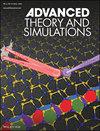基于细菌的分子通信:在不同粘度和环境条件下固定和后退接收器情景的模拟
IF 2.9
4区 工程技术
Q1 MULTIDISCIPLINARY SCIENCES
引用次数: 0
摘要
本研究介绍了一种利用大肠杆菌趋化行为的新型细菌分子通信(BBMC)模型,用于纳米级信息交换。开发了一个全面的三维仿真框架,分析了扩散系数(D)、化学引诱剂释放速率(Q)、接收器(RX)速度(u)和初始收发距离(D)等关键参数对通信性能的影响。结果表明,较低的D值促进了化学引诱剂梯度的形成,从而提高了信号的清晰度和效率。相反,更高的RX速度会扭曲这些梯度,增加信号到达时间,降低成功率。升高的Q值显著拓宽了传感范围,提高了可靠性,特别是在较远距离上,尽管它们的影响在高RX速度下会减弱。值得注意的是,当d接近理论感知阈值时,成功率急剧下降,强调了参数调整的关键需求。实验结果证实了这些发现,并揭示了一个阈值,超过这个阈值,细菌的运动变得随机,限制了有效的信号传输。这些见解有助于优化BBMC系统,提高效率和可靠性。应用包括靶向药物递送,环境生物传感和合成生物学,其中精确的细菌信号是必不可少的。该研究还证明,模拟是一种可扩展的、经济高效的实验方法替代方案,可以解决现实世界场景中的复杂性和可行性。本文章由计算机程序翻译,如有差异,请以英文原文为准。

Bacterial-Based Molecular Communication: Simulation of a Fixed and Receding Receiver Scenarios in Varied Viscosities and Environmental Conditions
This study introduces a novel bacterial-based molecular communication (BBMC) model for nanoscale information exchange, harnessing the chemotactic behavior of Escherichia coli (E. coli). A comprehensive 3D simulation framework is developed to analyze the impact of key parameters diffusion coefficient (D), chemoattractant release rate (Q), receiver (RX) speed (u), and initial transmitter-receiver distance (d) on communication performance. Results indicate that lower D values enhance the formation of chemoattractant gradients, leading to improved signal clarity and efficiency. Conversely, higher RX speeds distort these gradients, increasing signal reach time and reducing success rates. Elevated Q values significantly broaden the sensing range and improve reliability, particularly over larger distances, though their effect is diminished at high RX speeds. Notably, success rates drop sharply as d approaches the theoretical sensing threshold, underscoring the critical need for parameter tuning. Experimental results validate these findings and reveal a threshold beyond which bacterial movement becomes random, limiting effective signal transmission. These insights contribute to optimizing BBMC systems for greater efficiency and reliability. Applications include targeted drug delivery, environmental biosensing, and synthetic biology, where precise bacterial signaling is essential. The study also demonstrates simulation as a scalable, cost-efficient alternative to experimental methods, addressing complexity and feasibility in real-world scenarios.
求助全文
通过发布文献求助,成功后即可免费获取论文全文。
去求助
来源期刊

Advanced Theory and Simulations
Multidisciplinary-Multidisciplinary
CiteScore
5.50
自引率
3.00%
发文量
221
期刊介绍:
Advanced Theory and Simulations is an interdisciplinary, international, English-language journal that publishes high-quality scientific results focusing on the development and application of theoretical methods, modeling and simulation approaches in all natural science and medicine areas, including:
materials, chemistry, condensed matter physics
engineering, energy
life science, biology, medicine
atmospheric/environmental science, climate science
planetary science, astronomy, cosmology
method development, numerical methods, statistics
 求助内容:
求助内容: 应助结果提醒方式:
应助结果提醒方式:


